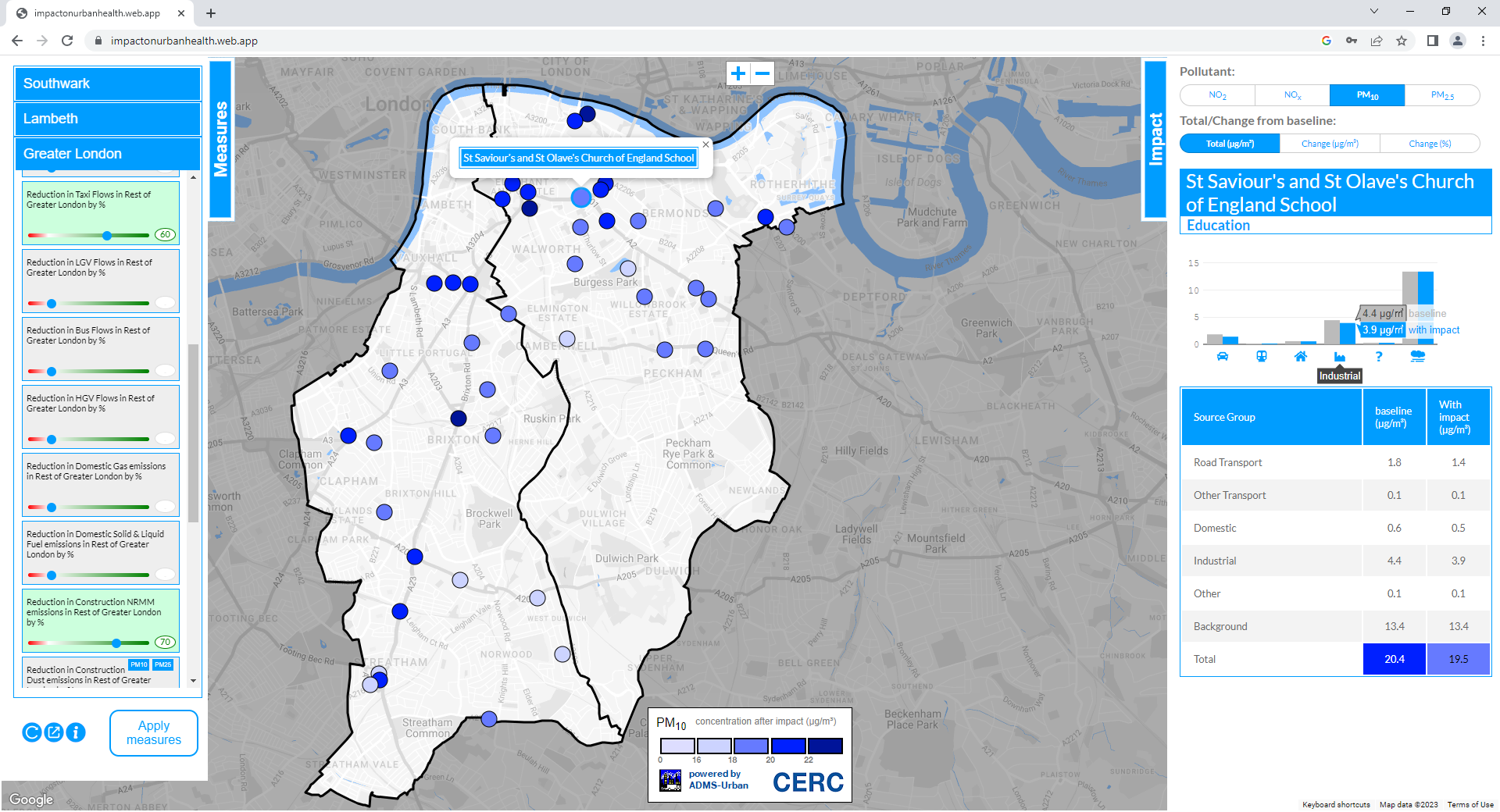CERC news
< Previous12345678910111213141516171819Next >

17 Oct 2023CERC sponsor Cambridge Climate and Sustainability Forum (CCSF) event
CERC are proud to be the main sponsor for the 2023 Cambridge Climate and Sustainability Forum (CCSF). This was a University of Cambridge student event organised by Cambridge Hub and also sponsored by Cambridge Zero. This year a one-day forum on Climate Change was held on Sunday 15th October at the Cambridge Union, with over 190 people attending. Topics covered a wide range from Sustainable Growth/degrowth, Activism, Climate Politics and Emerging Technologies. There were break out periods for group discussions, Q&A sessions, as well as time at the end of the day for further dialogue and exchange of ideas. The day was a huge success.

13 Oct 2023IAQM Webinar on Air Quality Futures: Environment Agency horizon scanning
CERC were recently commissioned by the Environment Agency (EA) to contribute to their ongoing horizon scanning programme, with a focus on the air pollution sources and situations that the EA is responsible for. Two projects were commissioned as part of the programme.
In one project, CERC worked with Air Quality Consultants to assess the developing approaches and technologies around air quality modelling and monitoring, and prospects for integrating these methods for air quality assessment. Specific methods covered include coupled modelling systems, machine learning and low-cost sensor networks. The other project, led by Aether, looked at the drivers and changes likely to impact on the EA's work over the coming decades. Both projects involved discussions with the EA and experts in the field to identify priority topics.
The Institute of Air Quality Management (IAQM) are hosting a webinar 'Air Quality Futures: Environment Agency horizon scanning' to launch the outcomes of these two projects. The webinar is free to attend and will take place between 12:15 and 13:15 next Tuesday (17th October). Register here for free and come along!

11 Sep 2023Booking is now open for the ADMS User Group Meetings, 29-30 November 2023, York
You can now book your tickets for the 2023 ADMS User Group Meetings, which will be held at Malmaison York on 29th and 30th November.
The annual ADMS User Group Meetings are a great opportunity to hear the latest ADMS model news and advice from CERC consultants and model developers, to hear talks by model users about their own applications of the software, and to network with other model users.
Tickets are available to order through Eventbrite until 23:30 on Tuesday 21st November. Organisations with a valid software support contract are entitled to one or more tickets free of charge depending on the type of licence held. The draft programme will be published soon.

25 Aug 2023Post-doctoral opportunities as part of a new Wellcome Trust funded health-centred West Midlands study
CERC are pleased to be collaborating with a multi-disciplined team on a new Wellcome Trust funded, West Midlands based project: “A Health-centred Systems Approach towards Net-Zero: Transforming regional climate mitigation policies”. The overall aim of WM-Net Zero is to transform regional Net-Zero policy solutions by adopting a health-centred systems approach.
WM-Net Zero brings together scientists from a range of disciplines (including social science, climate, air quality, data, health and economics) from the Universities of Birmingham, Surrey, and York, and stakeholders from West Midlands Combined Authority, Defra, Birmingham City Council, Clean Air Fund, Sandwell Metropolitan Borough Council, Coventry City Council, Solihull Council and WSP in the UK to develop new tools and science understanding.
This work builds on CERC’s previous collaborations with the University of Birmingham, for example the successful West Midlands Air Quality Improvement Programme (WM-Air). Dr Jian Zhong, from the School of Geography, Earth and Environmental Sciences, has published papers demonstrating how ADMS-Urban can be used to model baseline air quality over a large metropolitan domain and, of particular relevance to this new project, an investigation into impacts of net zero policies on air quality.
The WM-Net Zero team are currently recruiting for a research fellow (deadline 29th August) and an impact fellow (deadline 30th August).
About the image: This shows the reduction in annual mean NO2 (µg.m-3) for (a) 2030 Net Zero Scenario (NZS) and (b) 2030 Electric Vehicles (EV) (transport decarbonisation) scenario relative to 2030 Business-As-Usual (BAU) scenario; and percentage change for (c) 2030 NZS and (d) 2030 EV scenario relative to 2030 BAU scenario.

21 Aug 2023Creation of an air pollution scenario impact tool
CERC has developed a digital air pollution impact tool to model the impacts of changes to air pollution sources and the adoption of mitigation measures, on levels of air pollution exposure. The tool is potentially scalable to all London local authorities, and could be a 'ground-breaking' example for city authorities around the world, as are CERC's Breathe London and airTEXT services.
This is a joint commission by Impact on Urban Health (IoUH) and Southwark and Lambeth Councils, who have a shared ambition to reduce the harmful impact air pollution has on people's health, particularly those most at risk.
CERC selected sensitive locations in Lambeth and Southwark according to the risk from air pollution exposure and focusing on areas of deprivation, according to Indices of Multiple Deprivation (IMD).
We used ADMS-Urban to calculate concentrations of NO2, PM10 and PM2.5 at these locations and calculated the contribution of different source groups at each location.
Our findings allowed us to identify outcomes and measures that affect exposure to air pollution at each location, such as changes in traffic movements, emissions performance of vehicles, or the use of different fuels for heating and cooking. We modelled the impact of each measure on exposure to the pollutants at each sensitive receptor site.
Our web-based interactive tool encapsulates the model results and allows the user to view the impact of different combinations of mitigation measures.
We assessed the health impact of the mitigation measures using the modelled concentrations and population, age and health data. Our findings and the methodology used for the work can be found in our report. In two years' time, CERC will review the model, checking usability and updating inputs where new data has become available.
You can also follow CERC news on Facebook, X, LinkedIn and by RSS.
< Previous12345678910111213141516171819Next >

